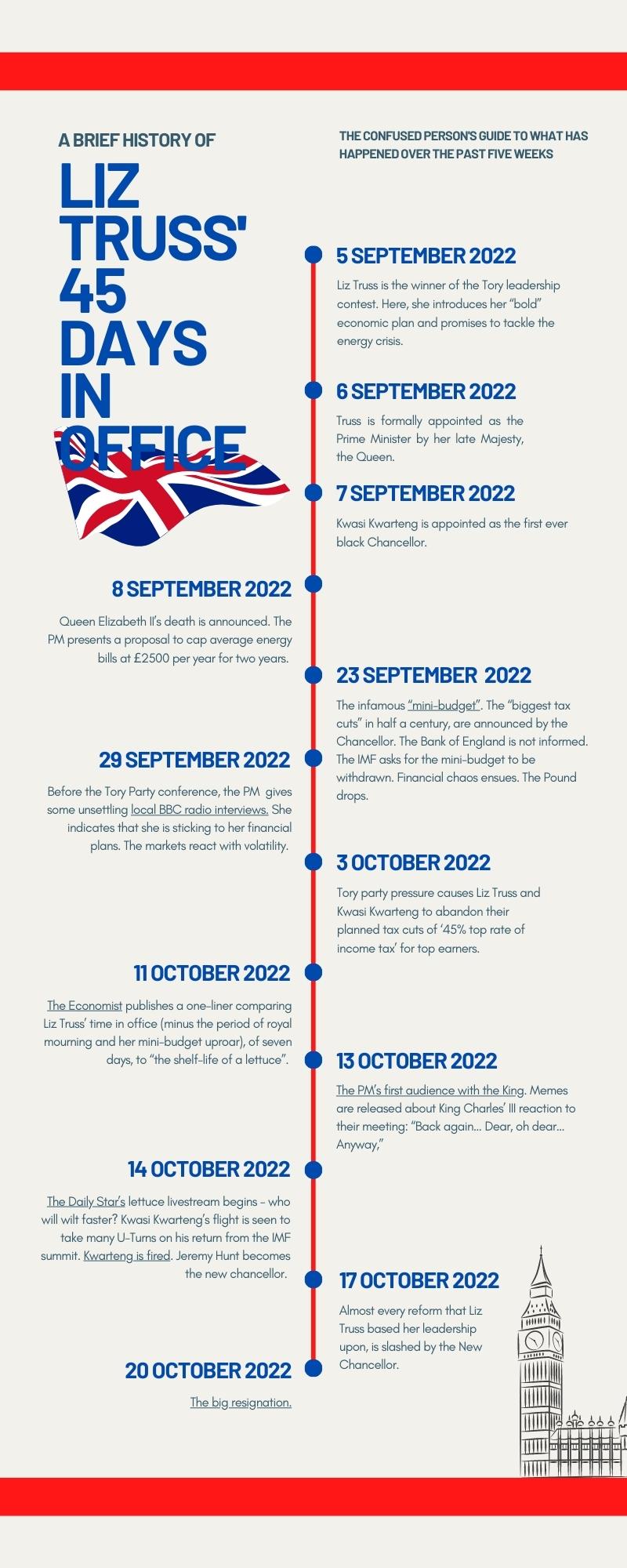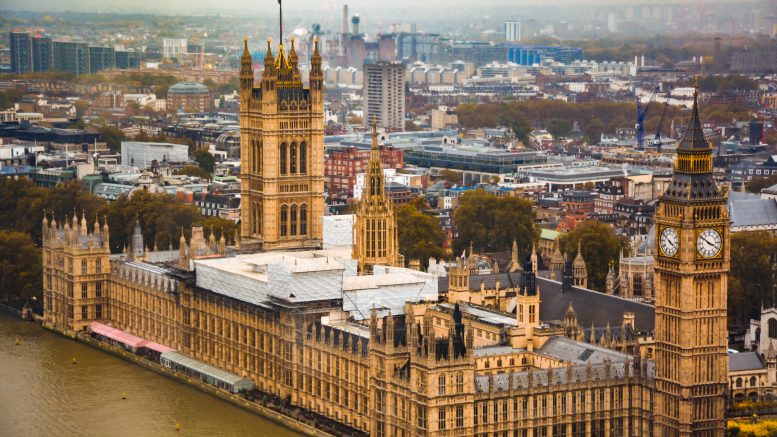The Prime Minister has been the shortest standing leader in UK history.
Understanding the whirlwind of Liz Truss’ time in office can be confusing. After all, how much can happen in five weeks? Clearly, a lot.
To break it down, it all began when Truss was appointed the third-ever female Prime Minister by the Tory Party on 5 September 2022. Upon her election, she introduced her “bold” financial plan to increase economic growth. She also promised to help tackle the rising energy costs by capping bills.
Two days after her official appointment as Prime Minister, on 8 September, her Majesty Queen Elizabeth II passed away. This began a 10-day-long period of royal mourning that put Truss’ politics on pause.
Upon the return to regular political proceedings on 23 September, the infamous “mini-budget” was launched by then Chancellor, Kwasi Kwarteng. He announced the biggest tax cuts in half a century. It was framed by Truss as a “fiscal event” instead of an official budget; thus justifying her decision to not consult the Office for Budget Responsibility. The Bank of England was not informed of the proposed budget, and later the IMF asked for the the policy to be withdrawn. This lead to financial chaos and the Pound dropping.
Ahead of the Tory Party conference, on 29 September, Truss gave some unsettling interviews to local BBC channels. These interviews appeared to indicate that she was not going to back down on her mini-budget and other economic plans; the financial markets reacted with further volatility.
After pressures mounted on their economic plans, Truss and Kwarteng were forced to abandon their planned tax cuts of ‘45% top rate of income tax’ for top earners.
In an effort to ease tensions in the market, on 10 October, Kwarteng moved ahead the publication date of the government’s economic plans and forecasts by almost a month. Publication was now scheduled for 31 October instead of 23 November.
On 11 October, The Economist published a one-liner comparing Truss’ time in office (minus the period of royal mourning and her mini-budget uproar), of seven official days, to “the shelf-life of a lettuce”. The piece then lead to the Daily Star starting a livestream on Youtube, with a head of lettuce placed next to a photo frame of Truss. The intention was to witness who would wilt first.
Following Truss’ first meeting with the new King Charles III on 13 October, the next day Kwarteng was forced to resign from his position as Chancellor. Truss also announced a partial-reversal of her tax policies. Jeremy Hunt was appointed as the new Chancellor.
The new Chancellor then announced on 17 October that almost all of Truss’ proposed tax cuts would be reversed. This was a huge U-Turn in political policy for Truss’ government.
Truss finally resigned on 20 October, following a meeting with his Majesty, the King. Her reasoning is that she has failed to deliver on the policies for which she was appointed as Prime Minister.
Follow along at the News of London to find out who may be elected Britain’s next Prime Minister.
A brief timeline explainer:

Download the infographic below to click on the interactive links for more in-depth news coverage:
Words: Nadya Salie | Subbing: Cerah Handsaker


Be the first to comment on "A brief history of Liz Truss’ 45 days in office"